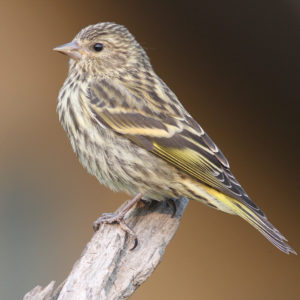By Kyle Kissock, Communications Manager
2.9 billion birds.
Let that number sink in. That’s how many less birds inhabit North American skies, forests, and cityscapes today, than did in 1970.
You probably saw the (now viral) scientific study that was released last month. It exposed an avian population in free-fall in the United States and Canada over the last five decades. Experts are referring to the near 40% decline detailed in its conclusions as a “full-blown crisis.”

A study recently showed North American bird populations undergoing rapid declines. What can we do to help?
In the wake of the study’s release, I found myself feeling a little helpless. I suspect I wasn’t alone. I understand that from a scientific perspective, losing birds has broader implications for ecosystem health. But more personally, identifying the sparrows, nuthatches, and cardinals of my childhood backyard was one of my first authentic connections to the natural world. The arrival of colorful warblers in the springtime, the flocking of chickadees to the feeder during a winter snowstorm. The thought growing up without these backyard birds elicits a visceral reaction; to me, their simple presence still inspires awe and wonder. I believe birds make our world a richer place.
As a community of wildlife-enthusiasts, I think we have rights to be concerned. But a month out from the sobering news of this study, I’m also trying not to feel helpless. It’s true that reversing this trend and effectively combating decline of this magnitude will take intentional, global action. But what’s stopping us from personally working to save one, two, or three birds a year? For example, Nature Mappers report bird strikes on windows nearly every month . . . is there something we can be doing better that can make an immediate impact?
Let’s starting by taking the causes of avian decline case by case. Then, I urge us to consider if there are steps we can take today to lessen our impact on our avian friends. According to the United States Fish and Wildlife Service the top three causes of bird deaths in the United States are as follows:
- Cats: 2,400,000,000 bird deaths annually
- Collisions with buildings (glass): 599,000,000 annually
- Collisions with automobiles: 214,500,000 annually
Cats
What can we do? – Consider indoor cats. When young birds leave their nests, there is a period of days when they cannot sufficiently fly to escape predators. These fledglings stand virtually no chance against prowling prides of suburban felines. Many of us have pet cats ourselves. All of us know somebody who owns a cat, or cats. These numbers do not mean we should give up our beloved cats. They do mean that if we’re serious about being a good neighbors to local wildlife, we should be aware of the impacts “outside cats” have on nesting bird populations.
Automobiles
What can we do? – Drive a reasonable speed and pay attention to the road. Do not crash your car trying to avoid a bird. Do remember, the faster you drive, the less time any animal will have to react to avoid being smashed by your vehicle. Not carelessly exceeding the speed limit in known wildlife-habitat is a great way to keep yourself and animals safe!
Window Strikes (The single easiest way to help birds)
What can we do? – Birds collide with windows because they see reflections of sky, vegetation, or sometimes themselves. If you have windows that regularly experience bird strikes, please consider one of several mitigation techniques.
- Window decals – These can be purchased on Amazon here as well as from decal-specific sites here or here. Find a decal that works for the aesthetics and functionality of your window. Recommended spacing for decals is small enough that birds can’t fly between them, but anything is better than nothing. Personal note: I had “problem windows” in my apartment before adding a few clear, window decals. My evidence is unscientific, but my problem windows have experienced far less bird strikes over the last year. I wish I had acted sooner.
- Write-on-glass markers – Check out this video to see how to mark your window with glass markers so that they are apparent to birds!
- Vertical blinds and or screens – A screen on the outside of a window can minimize reflective potential of the glass. Vertical hanging blinds on the inside of a window can serve the same purpose.
Click here for more mitigation techniques.
So where does this leave us? Admittedly with a long way to go. But we also know that many people coming together, to make small changes really can result in outsized impacts. As acommunity that pledges to live compatibly with our wild neighbors and reduced human impacts on wildlife, I believe it’s our responsibility to consider everything from moose to Song Sparrows, in the course of our daily lives.
If you find yourself acting to minimize your impacts on birds on the heels of this report, please let me know at kyle@jhwildlife.org. I’d love to share your story!
Note: In the past, Nature Mappers have coded mortalities from bird-window strikes as “Accidents” in the NMJH database. To be more specific going forward, the correct coding will be “Serious Injury” with a prompt to make comments in the “Notes” field to record a bird-window strike.
